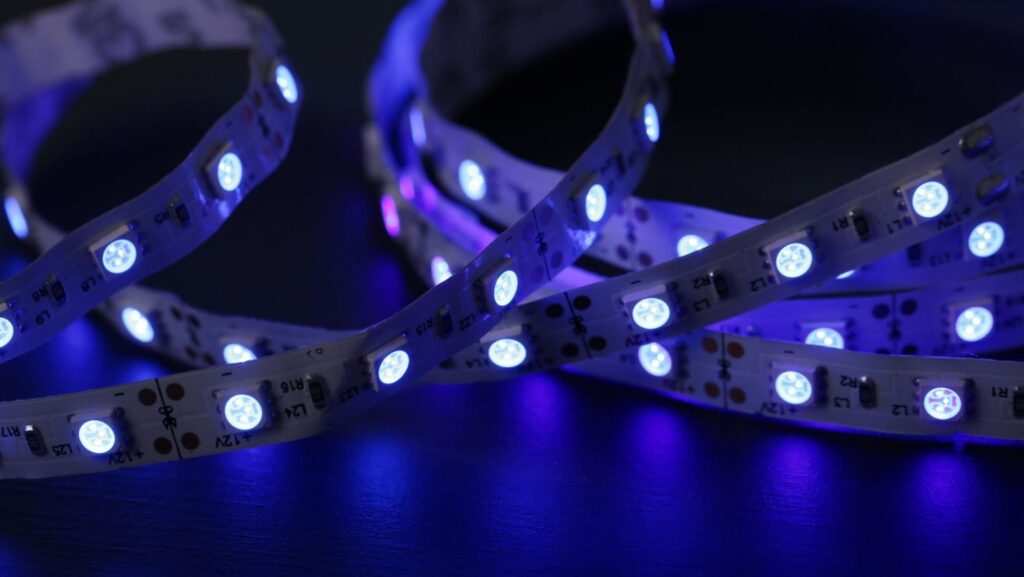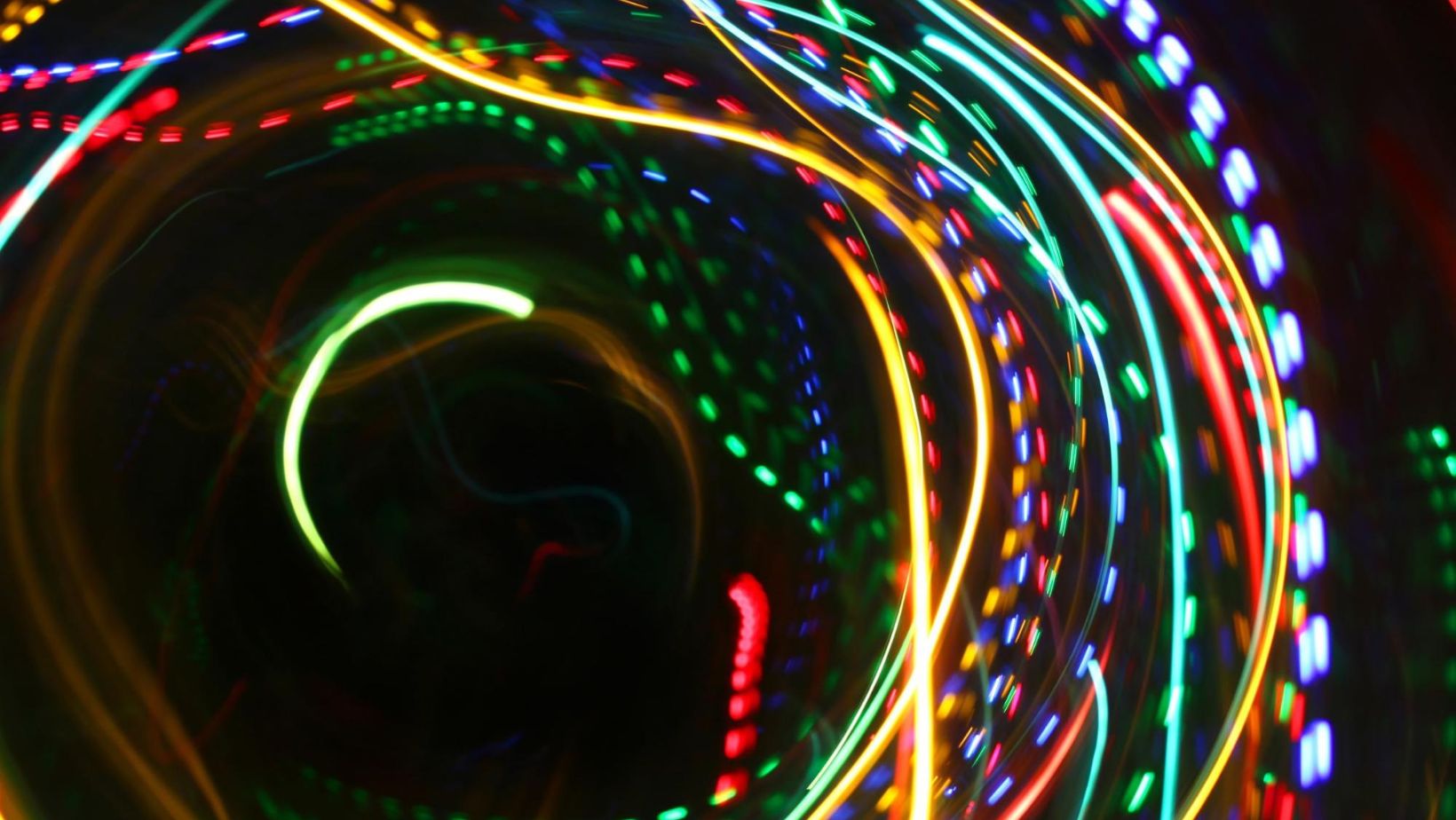In recent years LED strip lights have become an essential part of modern interior design, offering not only functional lighting but also aesthetic appeal. With the rapid advancements in technology and design, LED strips have evolved, providing an array of options to meet various needs, from accent lighting to full-room illumination. As we approach 2025, the selection of LED strip lights has grown more complex, with an increasing number of features, styles, and capabilities to choose from. Whether you’re outfitting your home, office, or commercial space, understanding the latest trends and innovations in LED strip lights will help guide you in making an informed decision.
Understanding LED strip lights
Before diving into the specifics of which LED strip lights to choose in 2025, it’s essential to understand what LED strip lights are and why they’ve become so popular. LED strip lights consist of a series of small LED bulbs mounted on a flexible strip, allowing them to be installed in various places, such as along edges, under cabinets, or around architectural features. Their versatility, energy efficiency, and the ability to emit consistent, vibrant lighting make them a preferred choice for both decorative and functional purposes.
LED strips are known for their ease of installation and customization. They can be cut to specific lengths, making them suitable for nearly any project, whether you’re illuminating a small nook or a large living room. Additionally, they come in a variety of colors, from standard, natural white to RGB (Red, Green, Blue) strips, which offer the ability to adjust and control colour temperature for dynamic lighting effects.
Key features to consider in LED strip lights
When choosing LED strip lights, there are several key features to consider to ensure you select the perfect option for your needs. These factors will directly impact the performance, look, and longevity of the lights.
1. Brightness and wattage
The brightness of LED strip lights is typically measured in lumens per meter. A higher lumen count means brighter light output, which can be crucial depending on where the lights will be installed. For example, under-cabinet lighting in kitchens might require brighter strips for task lighting, while accent lighting in a living room may not need as much power.
The wattage of an LED strip also plays a significant role in brightness, but it should be balanced with energy efficiency. In 2025, expect to see LED strips that offer both high brightness and lower wattage, ensuring that you can achieve a powerful lighting effect without sacrificing energy efficiency.
2. Colour options
The color temperature of an LED strip determines the hue of the light. It’s essential to choose the right color temperature depending on the mood or functionality you need. Warm white light is often used for creating a cozy, relaxed atmosphere, while cool white light is ideal for workspaces or areas where clarity and focus are important.
RGB LED strips have become increasingly popular due to their ability to display a full spectrum of colors, allowing for dynamic and customizable lighting. These strips offer flexibility, giving users the option to change the color to match their mood, the occasion, or the design of the space.
3. Durability and build quality
Durability is an important factor to keep in mind when selecting LED strip lights. The quality of the materials used in the strip itself can impact both its lifespan and how well it performs in various conditions. High-quality LED strips will be built to withstand heat, moisture, and physical wear, ensuring that they last for years. Look for strips that have a high-quality adhesive backing for easy installation and a reliable connection that won’t degrade over time.
Moreover, with the advancement of technology in 2025, some LED strips are now rated for outdoor use, making them a great choice for lighting up your garden, patio, or balcony. These outdoor-rated strips are typically waterproof and resistant to the elements, ensuring they remain functional and visually appealing even in harsh weather conditions.
4. Smart features and integration
In 2025, smart LED strip lights have become a major trend. Many LED strips now come with Wi-Fi or Bluetooth connectivity, allowing you to control the lights through a mobile app or voice assistants like Amazon Alexa or Google Home. This opens up possibilities for adjusting the lighting remotely, setting timers, and creating schedules based on your routine.
Another key advantage of smart LED strip lights is the ability to integrate them with other smart home devices. For example, you could set up your lights to change color or dim automatically when your smart thermostat detects a change in temperature or when your security system is activated. This integration adds both convenience and versatility to your lighting setup.
Types of LED strip lights in 2025
With so many different types of LED strip lights available, it’s important to understand which type will best suit your needs. Here are some of the most common types you’ll encounter in 2025:
1. Standard white LED strips
Standard white LED strips provide a consistent and neutral lighting solution. These are perfect for areas where you need bright, uniform light, such as kitchens, bathrooms, or workspaces. They come in a variety of color temperatures, ranging from warm to cool, allowing you to choose the one that best fits the ambiance you’re aiming to create.
2. RGB LED strip lights
RGB LED strips allow you to select from millions of colors, making them ideal for creating dynamic and colorful lighting effects. Whether you want to create a party atmosphere, enhance a home theater experience, or simply change up the mood in a room, RGB LED strips offer the flexibility to do so. Many of these strips come with an accompanying remote control or app for easy customization.
3. Tunable white LED strips
Tunable white LED strips combine the best of both worlds, offering adjustable color temperatures from warm white to cool white. This adaptability makes them ideal for spaces that require different lighting conditions throughout the day, such as living rooms, offices, or bedrooms. These strips allow users to adjust the brightness and warmth of the light to create a customized environment.
4. Addressable LED strips
Addressable LED strips are a newer and more sophisticated option in the market. Each LED on the strip can be individually controlled, allowing for more advanced lighting effects, such as chasing lights, color shifts, and animated patterns. These strips are particularly popular in applications like commercial lighting, event setups, or for creating dynamic decorative effects.
Technological advancements in LED strip lights for 2025
LED technology continues to evolve at a rapid pace, and in 2025, several advancements are influencing the LED strip light market. The integration of smart technology is a major factor driving this evolution, with many strips now featuring more powerful processors, advanced color rendering capabilities, and improved power efficiency.
Moreover, improvements in the design and construction of LED strips have made them more flexible, thinner, and easier to install. Some strips are now designed with adhesive backings that allow them to be mounted on more surfaces, even curved ones, ensuring they can be used in a wider variety of applications.
One of the most significant advancements in 2025 is the rise of sustainable LED products. As consumers become more environmentally conscious, manufacturers are creating LED strips with energy-saving features, such as adaptive dimming and motion-sensing capabilities, that reduce power consumption without compromising on brightness or performance.
Another exciting development is the introduction of color-changing LEDs that offer a more precise and dynamic range of colors. These LEDs are capable of producing more natural, vibrant hues, which is particularly important for spaces that rely on color accuracy, such as art studios or retail displays.
Making the right choice – Which LED strip lights are great for you?
Choosing the right LED strip lights for your space requires careful consideration of several factors. Start by identifying the primary purpose of the lighting. Are you looking for a functional light source for a workspace, or do you want to create a dramatic, colorful effect in a living room? Understanding the desired outcome will help you narrow down your options.
Next, think about the installation location. Some areas may require LED strips that are moisture-resistant or that can withstand the outdoor elements. If you’re planning to install the lights in a commercial space, durability and longevity will be key factors in your decision-making process.
Lastly, consider the level of control you need over your lighting. If you want to integrate the lights into a smart home system, choose a product with Wi-Fi or Bluetooth capabilities. On the other hand, if you’re simply looking for a plug-and-play solution for a specific lighting effect, a basic LED strip might be sufficient.
Conclusion
As we move into 2025, the options for LED strip lights have become more diverse and sophisticated. Whether you’re aiming for practical lighting, dramatic effects, or a mix of both, there is a product on the market that will meet your needs. By considering factors such as brightness, color temperature, smart features, and durability, you can make an informed decision that will enhance the look and feel of any space. With advancements in technology and an ever-growing selection of LED strip lights, the future of lighting is bright and full of possibilities.




More Stories
How Automation and Smart Tools Are Transforming Architectural Practice
Why Turnkey Sweepstakes Software Is Catching On Fast
Corian: A Modern, Durable Choice for Contemporary Kitchens